Working with archives collections, that is, with books, papers, photos, and other two-dimensional records, is a gift unto itself. These are the actual documents interacted with by people of the past and are a part of our history! We learn cool facts as we process and use these collections. We also often see items of interest. Whether that means uncovering a surprising historical event or discovering something unexpected, our memorable finds fuel conversations and entertain us. However, these finds also provide us with a more personal insight into the history we are working with and the people who used these records.
Below you’ll find some unforgettable items our staff has come upon over the years while working in archives and libraries.
Keeping Track(s)
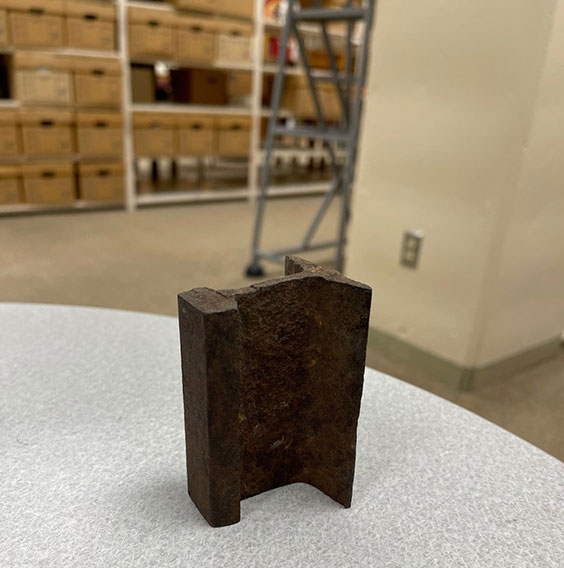
The most memorable thing I have found was in the Great Northern Railway Company, Minot Division, Engineering Department Records (MSS 10104). The collection consists of field notebooks, which I rehoused. During this process, I discovered what looked like a piece of railroad track being used as a spacer to keep notebooks upright in a box. I worked with this collection prior to being hired on full-time, so I also consider this item a neat memory of my days as a volunteer.
—Matt Ely, Photo Archivist
Hidden Behind the Frame
The most memorable finds in collections for me have been risqué photos. I have happened upon these several times, hidden behind framed photos or just loose among papers. I wonder about the circumstances that led to these materials being left in a collection donated to a public institution. Whether to keep these items as part of the collection sparks lively debate among our staff, harking back to our ethics lessons in school; that is a topic for another blog post.
—Emily Kubischta, Manuscript Archivist
A Personalized Stamp
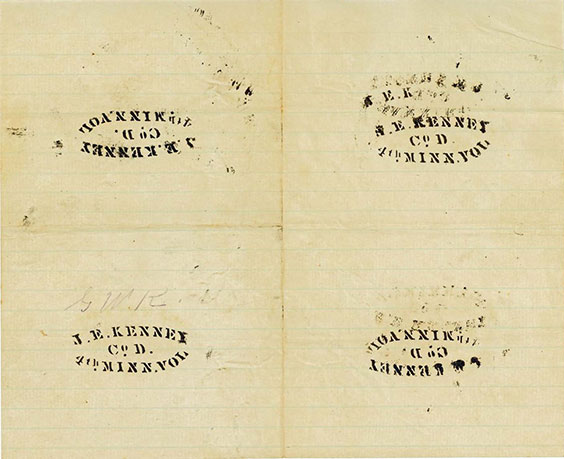
Personal stamp of Joseph E. Kenney. SHSND SA 11371-00018
One find that stands out for me is an example of a personal stamp used by Joseph Edwin Kenney, a soldier in the 4th Minnesota Infantry Regiment during the Civil War. The impression, as shown in this image, is part of the Kenney Family Papers (MSS 11371) at the State Archives. The stamp itself is not part of the collection. I have worked with manuscripts of Civil War soldiers for years as part of my academic research, and I have never encountered something of this nature. Possible uses for the stamp include marking his clothing, equipment, and personal items. Joseph gave his life in defense of the Union during the Vicksburg campaign in May 1863.
—Daniel Sauerwein, Reference Specialist
Empty Drug Sampling Containers in a Case File
We received some urine sample collection holders from a state agency as part of a human resources termination case. The State Archives was not supposed to receive the containers, and they were returned for proper disposal. One wonders why the containers were kept once the proceedings were over. Thankfully, they were empty!
—Larissa Harrison, State Government Archivist
A North Dakota Connection to a Film Set in Africa
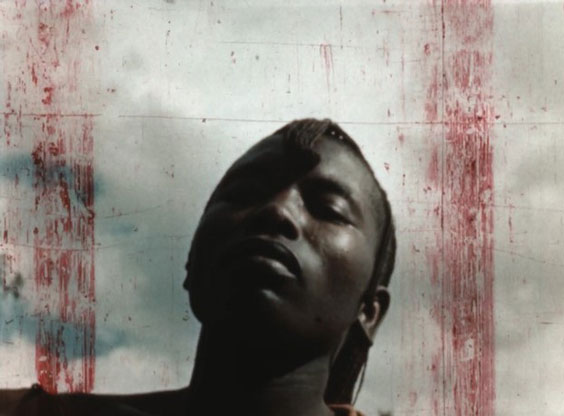
This still frame from Arch Oboler's unfinished travel film "Alice in Africa" depicts a Masaai tribesman in British Kenya. Red editing marks are visible throughout the footage.
The most memorable item I have discovered at the State Archives is an unfinished, unreleased film entitled “Alice in Africa” (MSS 10782, Bill Snyder Films Collection) produced and directed by Arch Oboler. North Dakota filmmaker Bill Snyder worked for Oboler in Africa during the late 1940s, which is how the film made its way from the continent to North Dakota. “Alice in Africa” centers on a white American woman (played by Oboler’s wife, Eleanor Oboler) who travels through Kenya, Uganda, and the Congo. While the film, which depicts activities and ceremonies of the Maasai, Kamba, and Tutsi tribes, does portray East Africa and its peoples from a white, colonial perspective, it is nonetheless a visually stunning work and an important piece of motion picture history. It represents an early example of a Kodachrome color reversal film of East Africa shot by Westerners.
—Anne Loos, Audiovisual Archivist
Literal Fingerprints
It’s hard to pin down just one memorable find. However, I would be remiss if I did not mention a recent surprise. While researching a collection, I discovered folders full of copies of fingerprints! Not a lot of paperwork accompanied them, but it was cool to see some old-school sleuthing kept in our Archives.
—Sarah Walker, Head of Reference Services
Funky Bookplates
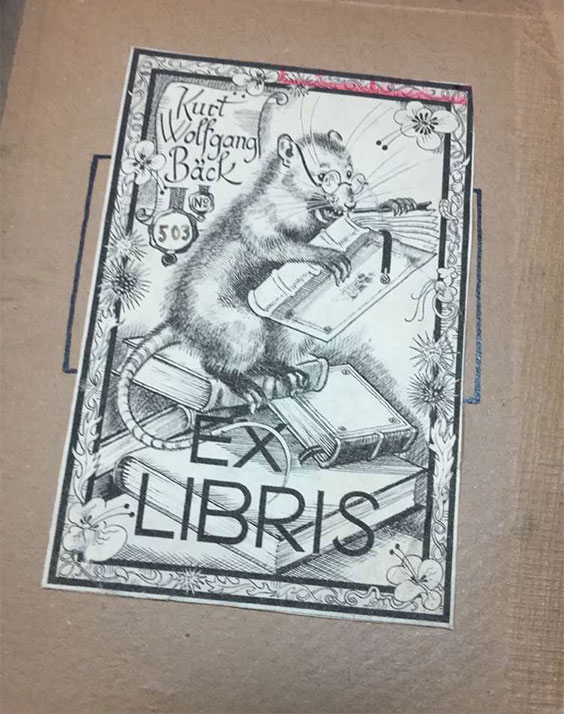
Some of the most memorable things I have found come from my time processing new book acquisitions at a previous job in the Department of Special Collections at the University of Wisconsin-Madison Libraries. My favorite part was checking to see if the book had a bookplate. A bookplate is a decorative label inside the front cover of a book showing who owns it. While printing your name would suffice, why wouldn’t you choose to design a bookplate that reflects your unique personal style and interests? Above is one of my favorites. I hope to find more weird and wonderful bookplates here at the State Archives.
—Ashley Thronson, Reference Specialist
Clippings and Trim
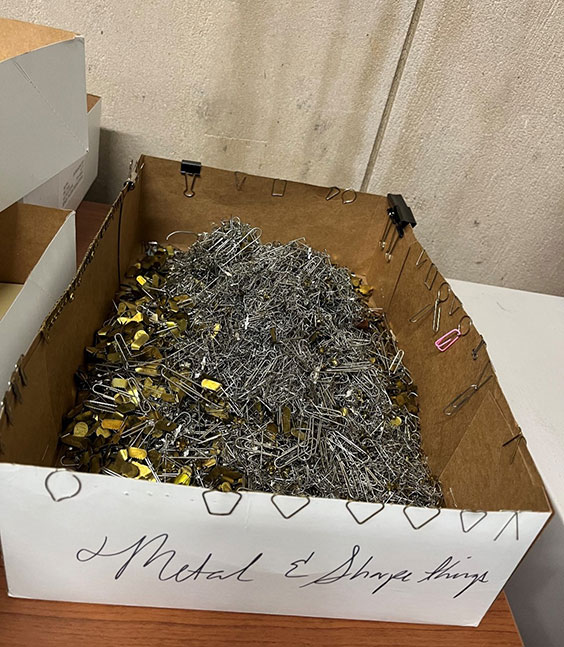
This is the reason why archivists need up-to-date tetanus shots! I keep this box of paperclips (usually of the sharp or questionable variety) beside my desk and, as you can see, use it regularly to collect the many varied things used as fasteners I find while going through collections.
—Megan Steele, Local Government Records Archivist

